Jasper Reports
JasperReports is an open-source reporting tool for Java that is used for reporting of applications. This reporting tool helps in writing rich content onto the screen, to the printer, or into a variety of files like HTML, PDF, XLS, RTF, CSV, XML, ODT and TXT. JasperReports can also be used for Java-enabled applications like Java EE or web applications to generate dynamic content.
-
Install JasperReports
install Jasper Reports Community edition from Here.
https://community.jaspersoft.com/community-download
-
Lifecycle of JasperReports

A .jrxml report template is consist of the following parts shown in the below figure.
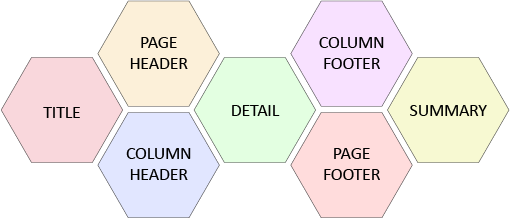
1. Create JasperReport Project in Eclipse
Jaspersoft Studio Plugin:
To program Jasperreport report you need to install JasperSoft Studio on Eclipse.
-
SQL Query
Select Acc.Open_Branch_Id
,Bra.Name Branch_Name
,Acc.Cust_Id
,Cus.Address Cust_Address
,Acc.Account_Id
,Acc.Product_Cd
,Acc.Avail_Balance
From Account Acc
,Customer Cus
,Branch Bra
Where Acc.Cust_Id = Cus.Cust_Id
And Acc.Open_Branch_Id = Bra.Branch_Id
-
Create JasperReport Project
Open Perspective: Report Design.



Next, create a project :
- File/New/Other..

Enter the name of the Project:
- HelloJasperReport

Project has been created:

-
Create Data Adaptor
Here I connect with Oracle database. You can do the same with MySQL or SQLServer. There is some differences in the using library and URL Connection String.



Error emerges when you do not declare the classpath of Database Library Driver.
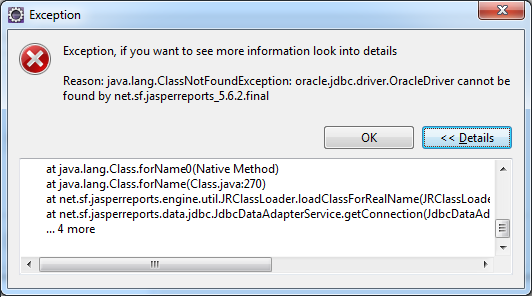
Just Add the jar file location, the JDBC Driver library for this database



OK, Data Adaptor was created.
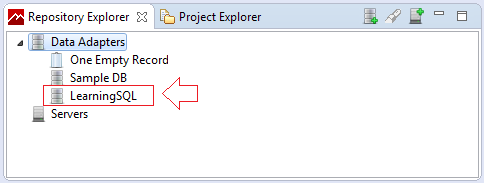
1. Design report
Create a new report
File/New/Other…


Enter the name of the report: FirstJasperReport
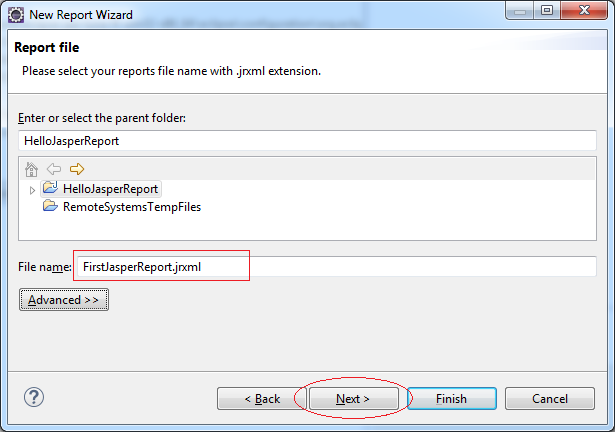

?





The report is generated.


Outline View is very important. We often have to use it while designing a report.


A blank report page is created. In which, parts of content of Page Header, Column Header, Column Footer, Page Footer are repeatedly displayed on each page of the report. You can delete unnecessary parts of content by right-click on it and click Delete.
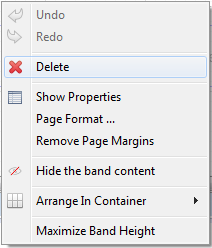
Here I deleted all of parts, except for Column Header & Detail in order to make it easy to design. We can recreate them if necessary.
- Column Header: contains titles of data columns. It is duplicated in all pages by default.
- Detail: contains records. It repeat numbers of records.

2. Deep design report
Drag and drop Rectangle object from Pallete to Column Header of the report. Then, fully spread out the width of Rectangle.

Next, adjust the height of Column Header so that it is equal to the height of newly-made Rectangle. The purpose is to erase unnecessary space in the report.

Results:

Change the background color of the rectangle:


Next, we create 2 groups in turn:
- Group Branch
- Group Cust
Their meaning is described in the following illustrative image:

On the Outline, right click to FirstJasperReport, select Create Group:




Next, we drag a Rectangle from Pallete to “Branch Group Header 1” area.



Change the background color for the rectangle you just created.

Next, we will drag drop respectively the Field Open_Branch_Id and Branch_Name into Rectangle on the block “Branch Group Header 1”.



Similarly, we drag and drop Branch_Name next to Open_Branch_Id.

Next, Create Customer group:



After Customer Group is created, drag and drop Rectangle object into “Customer Group Header 1”. Adjust and change background of Rectangle as the following illustrative image:


Drag & drop Field: Cust_ID into Rectangle just created.


Similarly, drag & drop Cust_Address field.

Next, drag and drop fields Account_Id, Product_Cd, Avail_Balance into “Detail 1” area in turn:
Note: If you drag and drop FIELDS into Detail area, column titles will be automatically created in Column Header area.

Adjust the height of “Detail 1” area to a minimum:

Next, drag and drop the remaining column titles:

Minimize the height of 2 areas:
- Customer Group Footer 1
- Branch Group Footer 1

Next drag & drop Field: AVAIL_BALANCE into “Customer Group Footer 1” & “Branch Group Footer 1”.


Simultaneously, we change background of two objects we have just dragged and dropped.

- Run report (First time)
We test the report by clicking Preview TAB:

3. Beauty Report
Selecting the fields and setting properties as shown below.




- Run Report (Second time)

4. Design Header section of the report
-
Create images folder in project, copy file bank.png to this folder, as illustrated below:
-
bank.png


Drag and drop Image object from the Palette to the page header.




Next drag & drop “Static Text” object to Page Header.

Similarly, drag & drop second “Static Text” object to Page Header.


- Run Report (Third time)

JasperReport using Java
Download JasperReport library for Java
http://community.jaspersoft.com/download
You need a JasperReport file. We will run that report on Java. You can download an example of a report file at: https://community.jaspersoft.com/sites/default/files/files/StyledTextReport.zip
Unzip the downloaded file, we will have jrxml file.

Create a Java project and declare library.Create Java Project:JavaCallJasperReportTutorial
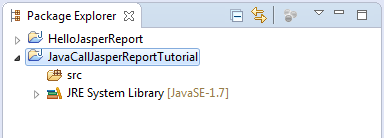
Create a libs folder and copy the most vital libraries into this folder, including:
- commons-beanutils-*.jar
- commons-collections-*.jar
- commons-digester-*.jar
- commons-logging-*.jar
- groovy-all-*.jar
- itextpdf-*.jar
- itext-pdfa-*.jar
- jasperreports-*.jar

Next, copy JDBC Drivers into libs folder. Here I copy all of three JDBC Driver into Database types including Oracle, MySQL, SQLServer.

To declare the library, right-click Project and select Properties

Select all the jar files in the libs folder:


-
Java - JasperReport without DB
Here is a simple example, Java will call to report JasperReport and generate PDF file. This simple example does not have the participation of the Database.
import java.io.File;
import java.io.IOException;
import java.util.HashMap;
import java.util.Map;
import net.sf.jasperreports.engine.JRDataSource;
import net.sf.jasperreports.engine.JREmptyDataSource;
import net.sf.jasperreports.engine.JRException;
import net.sf.jasperreports.engine.JasperCompileManager;
import net.sf.jasperreports.engine.JasperExportManager;
import net.sf.jasperreports.engine.JasperFillManager;
import net.sf.jasperreports.engine.JasperPrint;
import net.sf.jasperreports.engine.JasperReport;
public class PdfFromXmlFile {
public static void main(String[] args) throws JRException, IOException {
// Compile jrxml file.
JasperReport jasperReport = JasperCompileManager
.compileReport("C:/jasperreport/StyledTextReport/StyledTextReport.jrxml");
// Parameters for report
Map<String, Object> parameters = new HashMap<String, Object>();
// DataSource
// This is simple example, no database.
// then using empty datasource.
JRDataSource dataSource = new JREmptyDataSource();
JasperPrint jasperPrint = JasperFillManager.fillReport(jasperReport, parameters, dataSource);
// Make sure the output directory exists.
File outDir = new File("C:/jasperoutput");
outDir.mkdirs();
// Export to PDF.
JasperExportManager.exportReportToPdfFile(jasperPrint, "C:/jasperoutput/StyledTextReport.pdf");
System.out.println("Done!");
}
}
-
Java - JasperReport with MySQL DB
import java.sql.Connection;
import java.sql.DriverManager;
import java.sql.SQLException;
public class ConnectionUtils {
public static Connection getMySQLConnection() throws ClassNotFoundException, SQLException {
String hostName = "localhost";
String dbName = "learningsql";
String userName = "root";
String password = "12345";
return getMySQLConnection(hostName, dbName, userName, password);
}
public static Connection getMySQLConnection(String hostName, String dbName, String userName, String password)
throws SQLException, ClassNotFoundException {
// Declare the class Driver for MySQL DB
// This is necessary with Java 5 (or older)
// Java6 (or newer) automatically find the appropriate driver.
// If you use Java> 5, then this line is not needed.
Class.forName("com.mysql.jdbc.Driver");
// Cấu trúc URL Connection dành cho Oracle
// Ví dụ: jdbc:mysql://localhost:3306/simplehr
String connectionURL = "jdbc:mysql://" + hostName + ":3306/" + dbName;
Connection conn = DriverManager.getConnection(connectionURL, userName, password);
return conn;
}
}
import java.io.File;
import java.sql.Connection;
import java.sql.SQLException;
import java.util.HashMap;
import java.util.Map;
import net.sf.jasperreports.engine.JRException;
import net.sf.jasperreports.engine.JasperCompileManager;
import net.sf.jasperreports.engine.JasperFillManager;
import net.sf.jasperreports.engine.JasperPrint;
import net.sf.jasperreports.engine.JasperReport;
import net.sf.jasperreports.engine.export.JRPdfExporter;
import net.sf.jasperreports.export.ExporterInput;
import net.sf.jasperreports.export.OutputStreamExporterOutput;
import net.sf.jasperreports.export.SimpleExporterInput;
import net.sf.jasperreports.export.SimpleOutputStreamExporterOutput;
import net.sf.jasperreports.export.SimplePdfExporterConfiguration;
import org.o7planning.tutorial.javajasperreport.conn.ConnectionUtils;
public class JavaCallJasperReport {
public static void main(String[] args) throws JRException, ClassNotFoundException, SQLException {
String reportSrcFile = "F:/ECLIPSE_TUTORIAL/JASPERREPORT/HelloJasperReport/FirstJasperReport.jrxml";
// First, compile jrxml file.
JasperReport jasperReport = JasperCompileManager.compileReport(reportSrcFile);
Connection conn = ConnectionUtils.getConnection();
// Parameters for report
Map<String, Object> parameters = new HashMap<String, Object>();
JasperPrint print = JasperFillManager.fillReport(jasperReport, parameters, conn);
// Make sure the output directory exists.
File outDir = new File("C:/jasperoutput");
outDir.mkdirs();
// PDF Exportor.
JRPdfExporter exporter = new JRPdfExporter();
ExporterInput exporterInput = new SimpleExporterInput(print);
// ExporterInput
exporter.setExporterInput(exporterInput);
// ExporterOutput
OutputStreamExporterOutput exporterOutput = new SimpleOutputStreamExporterOutput(
"C:/jasperoutput/FirstJasperReport.pdf");
// Output
exporter.setExporterOutput(exporterOutput);
//
SimplePdfExporterConfiguration configuration = new SimplePdfExporterConfiguration();
exporter.setConfiguration(configuration);
exporter.exportReport();
System.out.print("Done!");
}
}